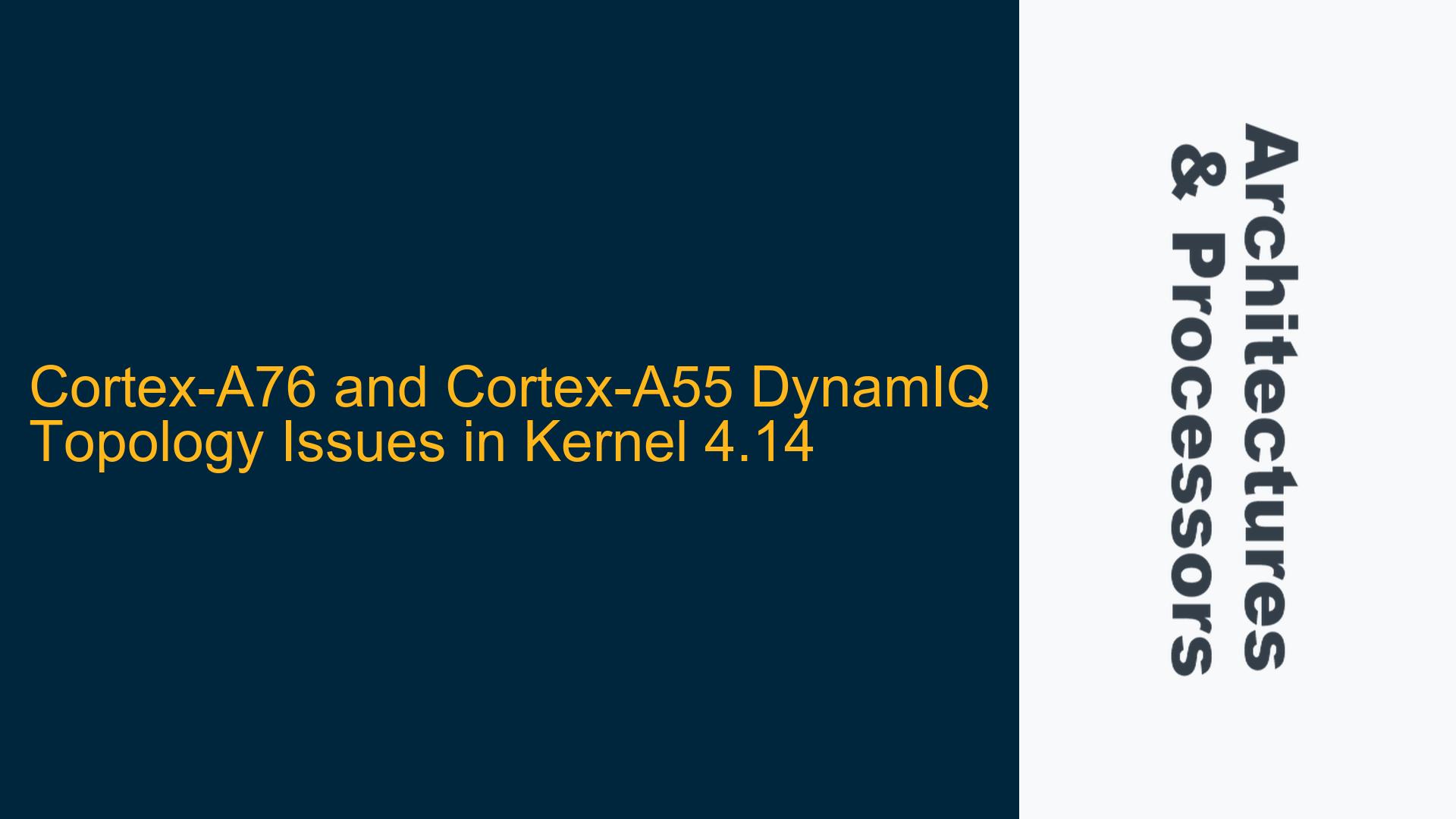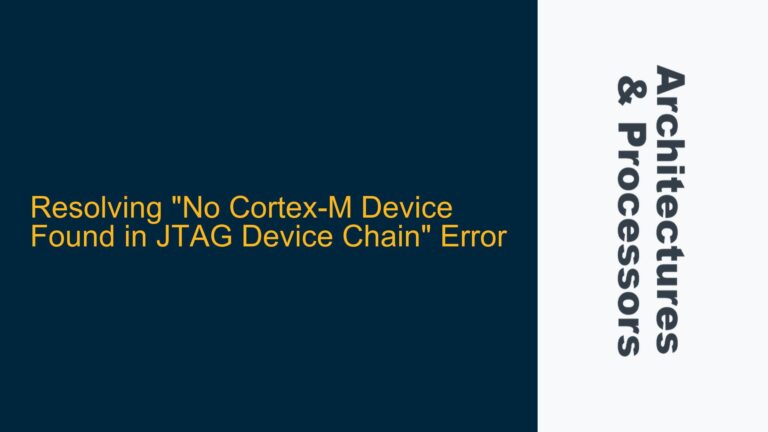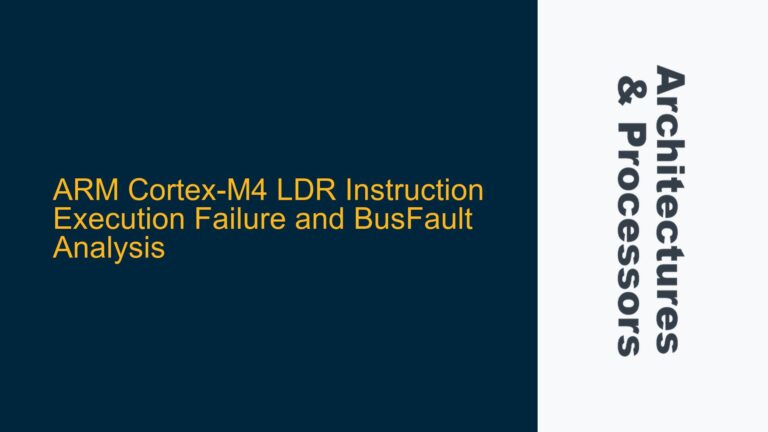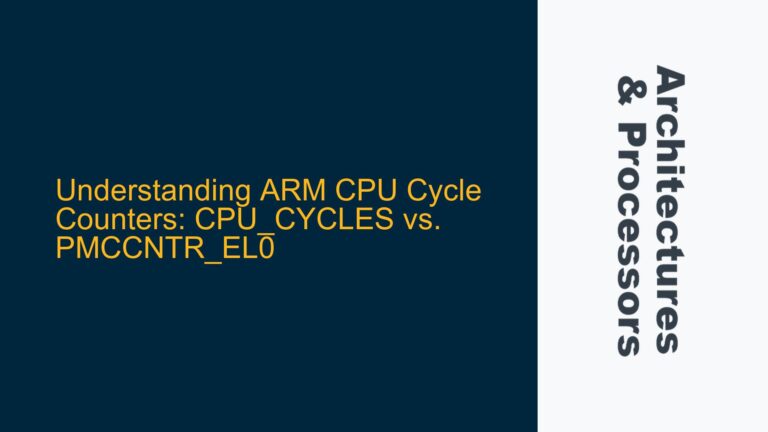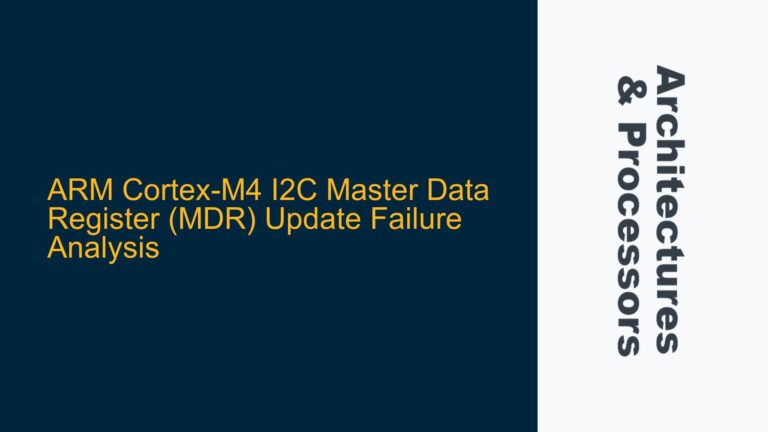ARM Cortex-A76 and Cortex-A55 DynamIQ Topology Representation Challenges
The ARM Cortex-A76 and Cortex-A55 processors, when paired using ARM’s DynamIQ technology, present unique challenges in terms of topology representation within the Linux kernel, particularly in version 4.14. The DynamIQ shared unit (DSU) allows for heterogeneous multi-core configurations, enabling a mix of high-performance cores (Cortex-A76) and power-efficient cores (Cortex-A55) within a single cluster. This flexibility is a significant advantage for mobile platforms like the Snapdragon 720G, where power efficiency and performance must be balanced dynamically.
However, the Linux kernel’s energy-aware scheduling (EAS) and CPU topology representation mechanisms in version 4.14 were not fully optimized for DynamIQ configurations. The energy model (EM) used in this kernel version relies on a static representation of CPU topologies, which does not account for the dynamic nature of DynamIQ clusters. This results in "phantom domains" being created in the scheduler’s domain hierarchy, leading to suboptimal task placement and energy efficiency.
The core issue lies in the fact that the scheduler’s view of the CPU topology does not accurately reflect the physical and logical relationships between the Cortex-A76 and Cortex-A55 cores. This misrepresentation can cause the scheduler to make incorrect assumptions about the energy cost of migrating tasks between cores, leading to inefficiencies in both performance and power consumption. For example, a task might be migrated from a Cortex-A55 core to a Cortex-A76 core when it would have been more energy-efficient to keep it on the Cortex-A55 core, or vice versa.
The problem is exacerbated by the fact that the energy model in kernel 4.14 does not fully account for the shared resources within a DynamIQ cluster, such as the L3 cache and the shared power domain. This can lead to inaccurate energy calculations, further degrading the scheduler’s ability to make optimal decisions. The result is a system that may not fully leverage the capabilities of the Cortex-A76 and Cortex-A55 cores, leading to reduced performance and higher power consumption than would otherwise be possible.
Phantom Domains and Energy Model Limitations in Kernel 4.14
The primary cause of the topology representation issues in the Cortex-A76 and Cortex-A55 DynamIQ configuration is the presence of "phantom domains" in the scheduler’s domain hierarchy. These phantom domains arise because the energy model in kernel 4.14 does not fully understand the DynamIQ shared unit’s role in connecting the Cortex-A76 and Cortex-A55 cores. As a result, the scheduler creates artificial boundaries between cores that do not exist in hardware, leading to suboptimal task placement and energy efficiency.
Another significant cause is the static nature of the energy model in kernel 4.14. The energy model assumes that the energy cost of running a task on a particular core is fixed and does not change based on the current state of the system. However, in a DynamIQ cluster, the energy cost of running a task on a Cortex-A76 core can vary significantly depending on factors such as the current workload, the state of the shared L3 cache, and the power domain’s current configuration. This static energy model cannot accurately reflect these dynamic conditions, leading to incorrect scheduling decisions.
Additionally, the energy model in kernel 4.14 does not fully account for the shared resources within a DynamIQ cluster. For example, the L3 cache is shared between the Cortex-A76 and Cortex-A55 cores, but the energy model treats it as if it were a separate resource for each core. This can lead to inaccurate energy calculations, as the energy cost of accessing the L3 cache can vary depending on which core is accessing it and the current state of the cache. Similarly, the shared power domain means that the energy cost of running a task on one core can be influenced by the activity of other cores in the cluster, but the energy model does not account for this interdependence.
Finally, the lack of proper support for DynamIQ in kernel 4.14 means that the scheduler does not have access to all the information it needs to make optimal scheduling decisions. For example, the scheduler may not be aware of the relative performance and power characteristics of the Cortex-A76 and Cortex-A55 cores, leading to incorrect assumptions about the best core to run a particular task. This lack of information can result in tasks being placed on cores that are not best suited for them, leading to reduced performance and higher power consumption.
Backporting EAS Patches and Optimizing DynamIQ Topology Representation
To address the topology representation issues in the Cortex-A76 and Cortex-A55 DynamIQ configuration, one potential solution is to backport the energy-aware scheduling (EAS) patches from a later kernel version to kernel 4.14. These patches include improvements to the energy model and scheduler that better support DynamIQ configurations, allowing for more accurate topology representation and energy calculations.
The first step in this process is to identify the specific EAS patches that address the issues with DynamIQ topology representation. The patch series referenced in the discussion, available at https://lore.kernel.org/lkml/[email protected]/, is a good starting point. These patches include changes to the energy model and scheduler that improve support for DynamIQ clusters, including better handling of shared resources and more accurate energy calculations.
Once the relevant patches have been identified, the next step is to backport them to kernel 4.14. This process involves carefully reviewing the patches to ensure that they are compatible with the older kernel version and making any necessary modifications to address differences in the codebase. It is important to thoroughly test the backported patches to ensure that they do not introduce new issues or regressions.
In addition to backporting the EAS patches, it may also be necessary to make additional modifications to the kernel to fully optimize the topology representation for the Cortex-A76 and Cortex-A55 DynamIQ configuration. This could include changes to the scheduler’s domain hierarchy to better reflect the physical and logical relationships between the cores, as well as updates to the energy model to account for the dynamic nature of the shared resources within the DynamIQ cluster.
One specific area that may require attention is the handling of the shared L3 cache. The energy model in kernel 4.14 does not fully account for the energy cost of accessing the L3 cache, which can vary depending on which core is accessing it and the current state of the cache. To address this, it may be necessary to add additional logic to the energy model to more accurately reflect the energy cost of cache accesses in a DynamIQ cluster.
Another area that may require attention is the handling of the shared power domain. The energy model in kernel 4.14 does not account for the fact that the energy cost of running a task on one core can be influenced by the activity of other cores in the cluster. To address this, it may be necessary to add additional logic to the energy model to account for the interdependence of the cores within the shared power domain.
Finally, it is important to thoroughly test the modified kernel to ensure that it provides the expected improvements in performance and power efficiency. This testing should include both synthetic benchmarks and real-world workloads to ensure that the changes have the desired effect across a range of use cases. It is also important to monitor the system for any regressions or new issues that may arise as a result of the changes.
In conclusion, addressing the topology representation issues in the Cortex-A76 and Cortex-A55 DynamIQ configuration requires a combination of backporting EAS patches and making additional modifications to the kernel. By carefully reviewing and testing these changes, it is possible to improve the accuracy of the scheduler’s topology representation and energy calculations, leading to better performance and power efficiency in mobile platforms like the Snapdragon 720G.
